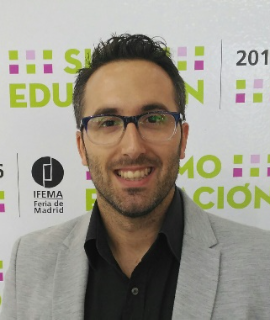Abstract:
Physical activity (PA) is being considered in recent years as an important part of the therapy and rehabilitation for cystic fibrosis (CF) patients, due to the evidences of health benefits (slower lung function decline, improved bone mineral density, nutritional status and mucus hydration and clearance, among others) for their quality of life. Nonetheless, PA is not always incorporated into the routine of people with CF. Moreover, the effects of PA in the quality of life of children and adolescents have been scarcely investigated in Spain. Therefore, the aim of the study is to assess if there is any difference in the perceived quality of life of children and adolescents with CF regarding if perform or not PA and also depends on the type of activity. Methods: Participants of the two hospital units of CF in Valencia (Spain) were invited to take part in this study aimed to assess PA, sedentary time and quality of life in children and adolescents with CF. A total of 51 CF patients (54.2% girls) aged 6 to 18 completed the Cystic Fibrosis Questionnaire for children and adolescents (CFQR Spain) taking into account the following domains: physical fitness, role limitations, vitality, emotional status, social limitations, body image, eating disturbance, treatment burden, health perception, weight problems, respiratory symptoms and digestive symptoms). For each domain, the score is given on a 0- to 100-point scale with higher scores denoting higher quality of life. PA was measured with accelerometry (Actigraph) and type of activity was registered. Non-parametrics tests (Mann–Whitney U test) were performed using software SPSS version 22.0 (SPSS Inc., Chicago, IL, USA), with alpha set at p < 0.05. Informed consents were obtained from all participants, and their parents or tutors, also having the support of the ethics committee of the university. Results: Median values for quality of life in the participants of the study were: physical fitness=83.3, role limitations=100, vitality=79.1, emotional status=70.8, social limitations=61.9, body image=66.6, eating disturbance=44.4, treatment burden=44.4, health perception=61.1, weight problems=66.6, respiratory symptoms=41.6 and digestive symptoms=33.3. Results indicate that 82.6% of participants perform at least one or even more than one PA or sport. With regards to the relationships between PA and quality of life, better perception of physical fitness was found in PA practitioners compared with non-PA practitioners (p<0.05). Moreover, those subjects performing more than one activity (62.9%) got better punctuation in vitality than those who engaged only in one (37.1%) (p<0.05). No differences were found between participants who practise or not practise swimming (47.4% vs 52.6% respectively) or among those who perform organized versus non-organized PA (89.7% vs 10.3% respectively). Therefore, it can be concluded that there is a positive relationship between PA and quality of life, at least in the perception of physical fitness and vitality. Nonetheless, it is still unclear if specific types of activities or organized PA, can have a better effect in the quality of life in youth with CF. In this sense, results of this study can help doctors, and specially pulmonologist and gastroenterologist, with their recommendations of physical activity or specific sports to their patients with CF




